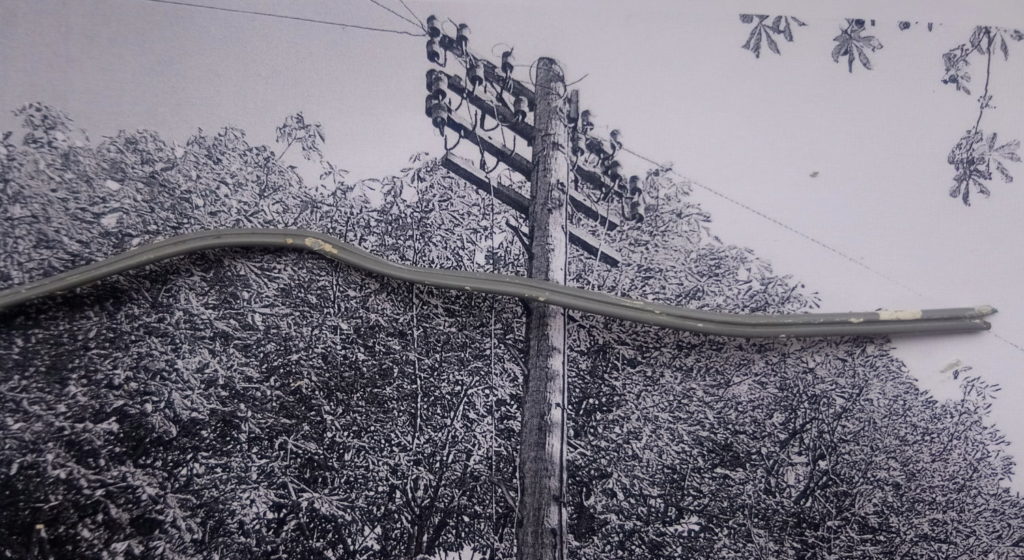What is it?
It connects your house to the telephone pole, via the outside of a building. I recall seeing it first in 1969. It’s quite rare these days, and there’s not much information on-line. “Time for an “Old Grey BT Drop Wire – Some FAQ” blog”, I thought.
What Does It Look Like?
Grey, thin, and “figure of eight” in section.
Why Should I Be Bothered About It?
If you are experiencing slow broadband speeds, the drop wire could be the reason. It was never designed to carry anything but the voltages for phone calls.
I Thought All Drop Wire Was The Same?
Nope! More recent stuff is made of pure copper (for better connectivity), has better insulation, is much stronger, and consists of twisted pairs of wires. See my earlier blog.
What’s The Issue With Twisted Pairs of Wires?
In order for broadband function properly, it needs to run over a twisted pair of wires to avoid interference (with itself!) and hence slower speeds (note to geeks and techie-obsessives- yes, I know this is a simplistic description). Parallel wires in anything running broadband are very bad news indeed. I have seen an instant leap in speed when these kind of non-twisted cables have been replaced. More about cables in my blog here.
What Else Is Bad About It?
As it is around at least forty years old, the insulation on the outside, and between the cores may break down. This will cause water to penetrate and give short-circuits or line noise (a gentle “swishing” sound or a crackle). Not good for streaming the latest Bond movie. Annoyingly, these faults may be intermittent, subject to weather. An engineer may call when everything is running just fine, not find the fault, and charge you for the call-out.
It’s Not Sounding Good So Far. Anything Else?
It’s made of copper-coated steel, therefore will rust and break. Worse still, one core will break, the other remain intact, and your broadband will still work, although at 20% of normal speed. I found some like this recently, with rust-staining around the grey sheath.
And Now, The Good News.
I have discovered via an engineer that Openreach have finally declared it “end of life” and may replace it free-of-charge. (About time, too…). You would need to organise this via your service provider.
But You Said “May”?
Yes. In some cases, if the speed is acceptable (according to them), and the replacement may take some considerable work, they may just leave it (so it has been alleged).
Where Does That Leave Me? Have You Any Suggestions?
Some engineers (allegedly) say that it has been know to fall down mysteriously overnight. This tends to bring matters to a head, and it has to be replaced. I couldn’t possibly comment…
If I can help (but not by making this old grey BT drop wire magically fall down), please be in touch.
